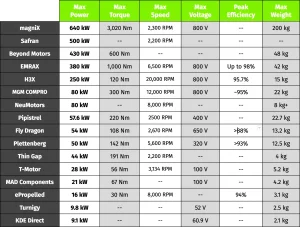So, you’re a flight enthusiast who enjoys tinkering and you’ve decided to build your own eVTOL, right? While we can’t exactly cheer you on (we don’t want anyone getting hurt, after all), we can, in theory, talk about what a DIY eVTOL construction project might look like.

What are the main components required for building a DIY eVTOL?
If you’re planning to DIY your very own eVTOL, which is essentially a human-sized drone, you’ll need a few critical components. First up, have the frame. This bad provides the structure and base for soaring machine. You can whip up a frame using materials like carbon fiber, aluminum, or robust plastic. Remember, it’s all about striking the right balance – lightweight, yet tough enough to hold the pilot and other components while shielding them during flight. In aviation, just like your high school sweetheart, ‘lightness’ is a keyword.
Next, let’s talk about the engines.
These powerhouses give your drone the thrust it needs to rise and shine. You might think about using brushless motors, which are not only more efficient but also last longer than their brushed counterparts. Make sure to pick engines with enough muscle to lift both the weight of the drone and any additional payloads.
Here are the top manufacturers of brushless motors for eVTOL:
| • magniX | • Tyto |
| • EMRAX | • MGM COMPRO |
| • NeuMotors | • Safran |
| • T-Motor | • Turnigy |
| • Thin Gap | • KDE Direct |
| • Pipistrel | • MAD Components |
| • ePropelled | • Fly Dragon |
| • Plettenberg | • Beyond Motors |
And how about we delve deep into the nooks and crannies of drone motors, sound good?

Let’s not forget about the flight controller.
This gizmo plays the role of the puppeteer, controlling and stabilizing the drone mid-air. You’ve got a ton of flight controller options, from open circuit flight controllers to their closed circuit cousins. Choose a controller that jives well with your intended software and boasts the requisite features.
Check out the video below. You’ll see you can even build your own flight controller. Pretty cool, isn’t it?
Last but not least, we have propellers
Like a good belting Broadway number, propellers are the main generator of thrust, propelling your drone into the wild blue yonder. It’s vital that you choose propellers that are the right size and shape for your drone and engines. You can craft propellers from various materials like plastic, carbon fiber, or aluminum alloy. Like an airplane’s wings, be sure to balance your propellers correctly to avoid any unwelcome vibrations during flight.
Now, let’s dive right into everything you need to know about propellers.
What are the recommended materials for building a DIY eVTOL?
In theory, the materials you use for your DYI eVTOL do hinge on your budget, just like everything else in life. Now, I would advise against using the same materials the Wright brothers did, just for historical accuracy, of course. What’s left? Well, aluminum alloys and fiberglass are rather popular in the aeronautics world, delivering some pretty pleasing results. Sure, you could splurge on pricier materials, but at that point, why not just swing for a ready-made eVTOL?
What software is commonly used for DIY eVTOL construction?
Software is a critical component, even for a humble DIY drone – and believe you me, it’s no simple task. Think of it like this: unlike a regular single-engine or twin-engine aero-model, just to get the motors of an eVTOL to spin synchronously requires a heck load of code. There are diverse software options commonly used in DIY drone construction and, who knows, they might just work for an eVTOL!
- A fan-favorite is ArduPilot, an open-source software (yes, spawned from the Arduino project, a renowned Italian brainchild loved by Makers) that offers a sophisticated flight control system. ArduPilot supports a wide spectrum of drones, throwing in features for autonomous flight control, mission planning, and real-time telemetry with aplomb.
- We shouldn’t forget about Betaflight, another software being used extensively, tailor-made for racing drones. With an intuitive user interface and advanced features such as PID control and sensor calibration, Betaflight is truly in a league of its own!
- Next up is Cleanflight, a popular choice that is actually a fork of Betaflight. Cleanflight offers similar features to Betaflight, but with some welcome twists in the user interface and configuration options—gotta love variety!
- Finally, proprietary software options from drone manufacturers, such as DJI Assistant and Parrot FreeFlight, also stake their claim. These are drone-specific for those brands, providing configuration and firmware update amenities.
What safety precautions should be taken when building a DIY eVTOL?
So you’re still thinking about building your own eVTOL? That’s a brave endeavor, my friend. But hey, let’s address some crucial considerations to keep those metaphorical—and possibly literal—bumps and bruises to a minimum.
- Eye Protection: Whether you’re assembling parts or soldering connections, sporting safety goggles is an absolute must. Nobody wants a metal shaving on their cornea, right?
- Safe Battery Handling: The batteries used in drones can be as volatile as a toddler without a nap. Always read, and more importantly, follow the manufacturer’s instructions for correct handling and charging.
- Prevent Short Circuits: When assembling your drone, keep a keen eye out for potential short circuits. Make sure there aren’t any exposed wires or incorrect connections that could blow your drone to smithereens or start a fire. Remember, your name isn’t Sparky for a reason.
- Right Tools for the Job: Ensure that you’re working with the appropriate tools when constructing your drone. Use correctly sized screwdrivers and insulated pliers to avoid shocks. It’s much more fun to be electrifying in personality, not in practice.
- Electrical Insulation: During assembly, it’s crucial to insulate your electrical components correctly. Use insulating tape or heat-shrink tubing to cover exposed wires and protect electrical connections. Again, we are going for electrifying results, not electrifying experiences.
- Check Your Connections: Before powering up your brand new eVTOL, double, and triple-check all the electrical and mechanical connections. Make sure all components are securely connected to prevent an accidental drop out of the sky during flight.
- Test in a Safe Area: Theoretically, before that exciting first flight, make sure to test your new eVTOL in a safe, open area, away from people, pets, and breakable objects. And perhaps start with just the remote control. Confirm that all controls are functioning correctly, and the vehicle responds well before taking it to wide open skies.
Where can I find genuine assembly kit options for DIY eVTOL?
Options for genuine DIY drone assembly kits can be found all over the place. Here we have an article dishing out tips to kick-start your hunt for the best eVTOL assembly kits.


Pingback: eVTOL Assembly Kits: The Overview - eVTOL World
Pingback: Brushless Motors for eVTOL and DIY Kits - eVTOL World
Pingback: The Dream of Flying is Reality - eVTOL World
Pingback: Materials for eVTOLs - eVTOL World